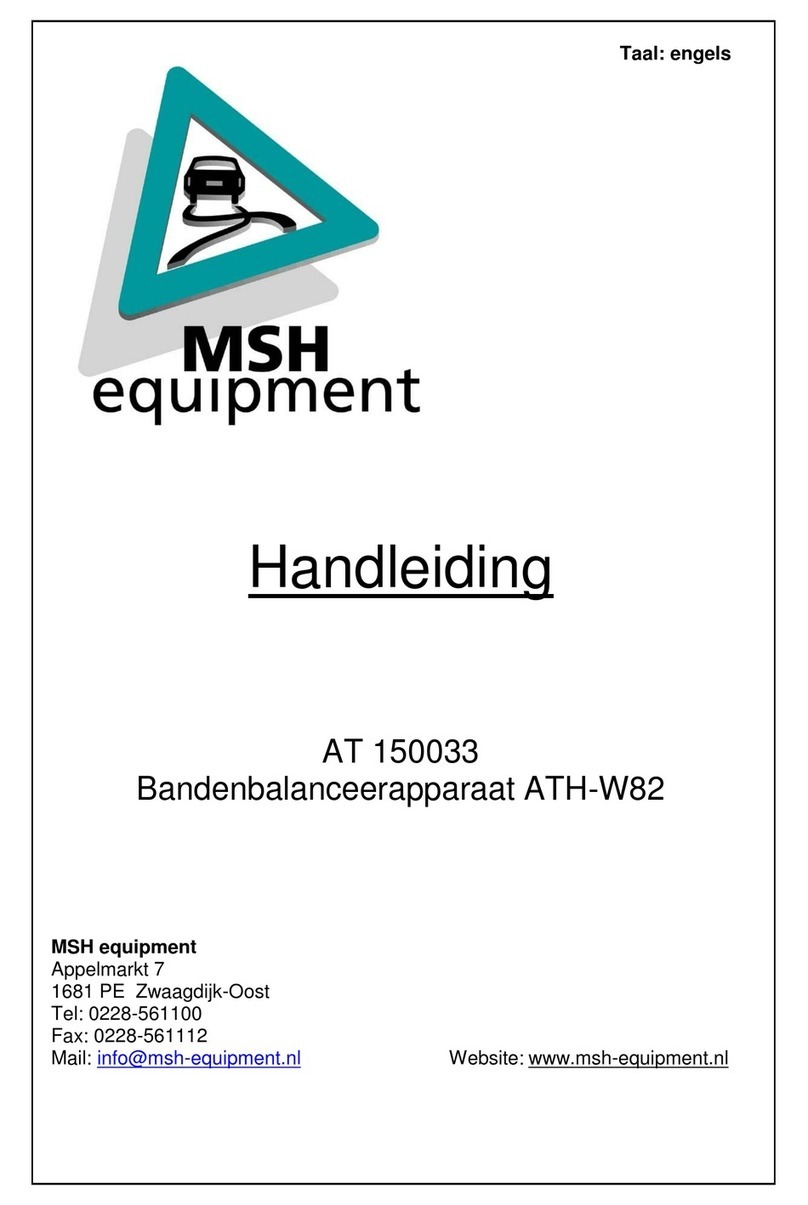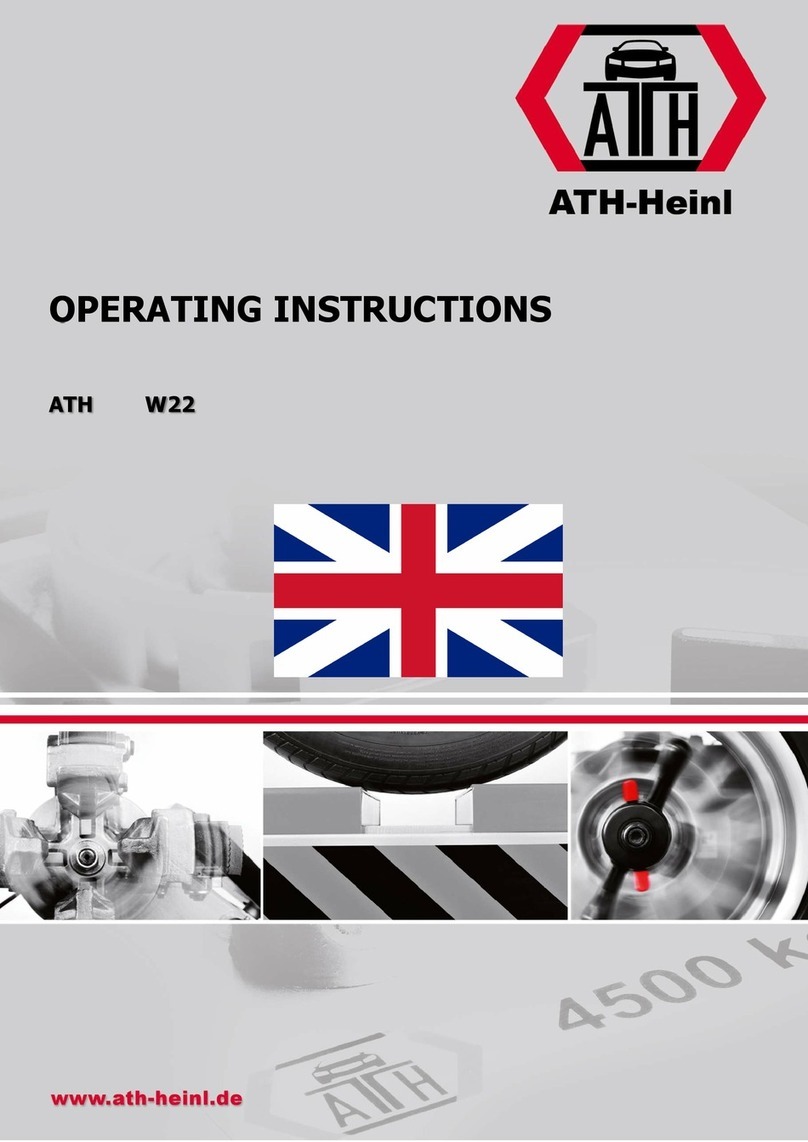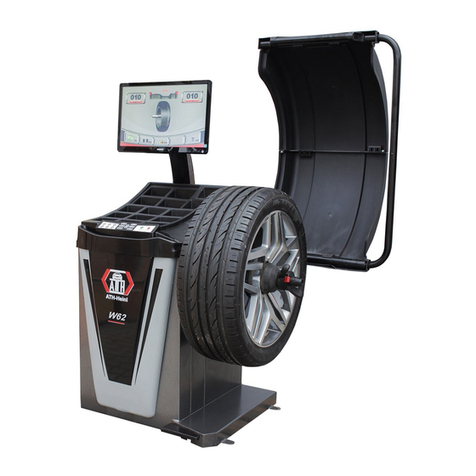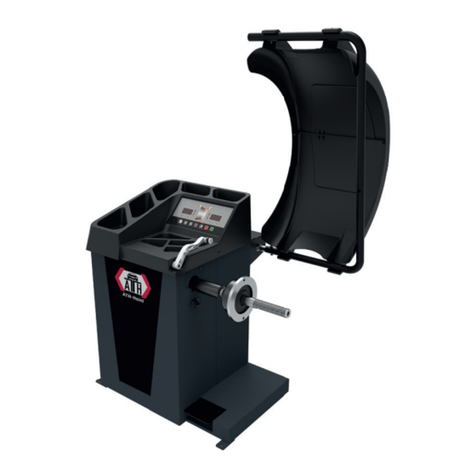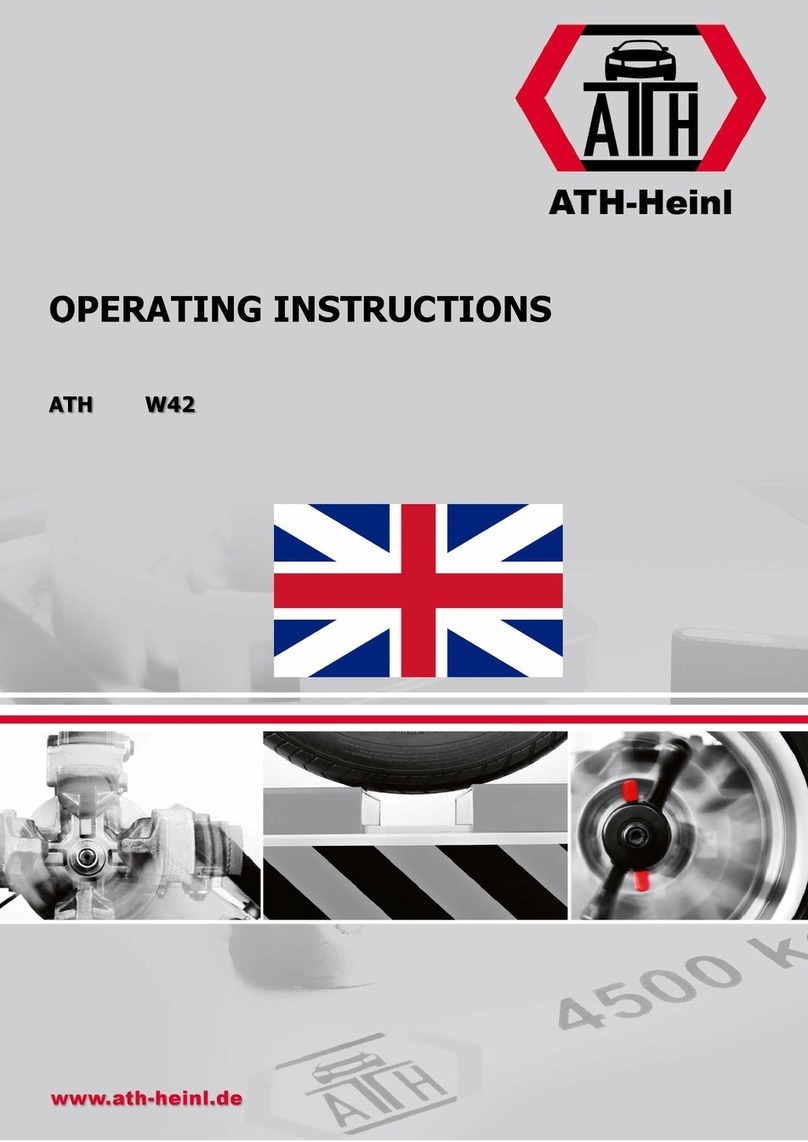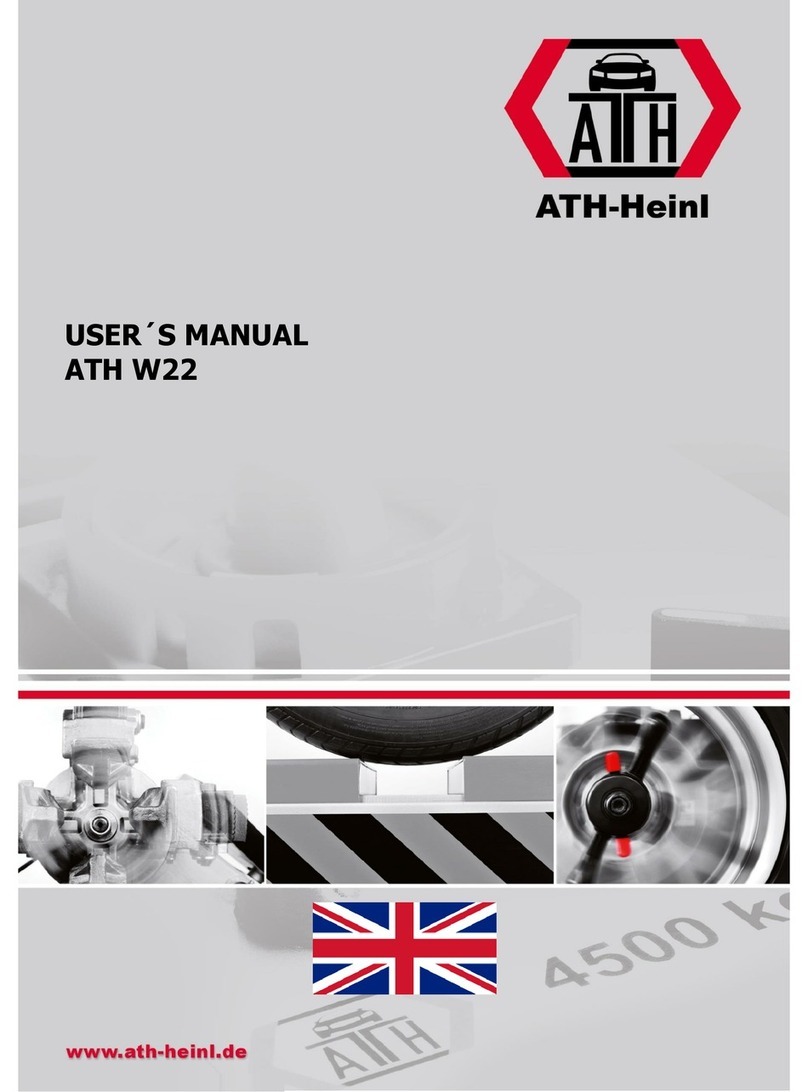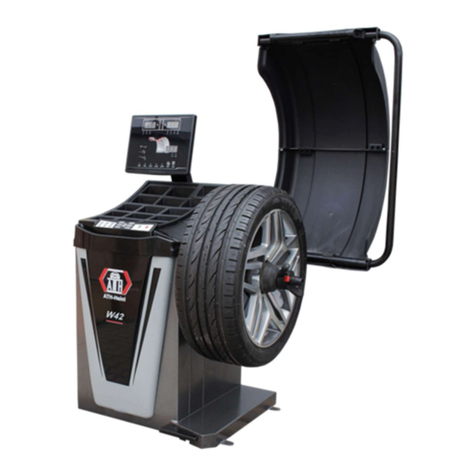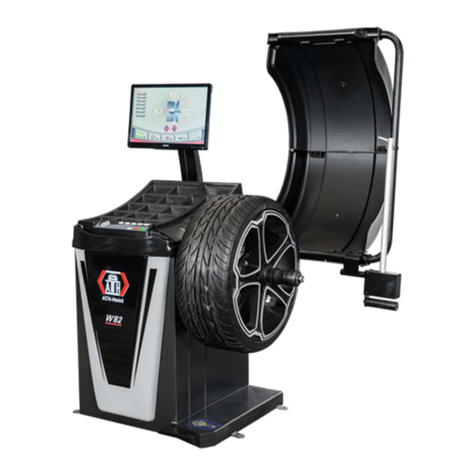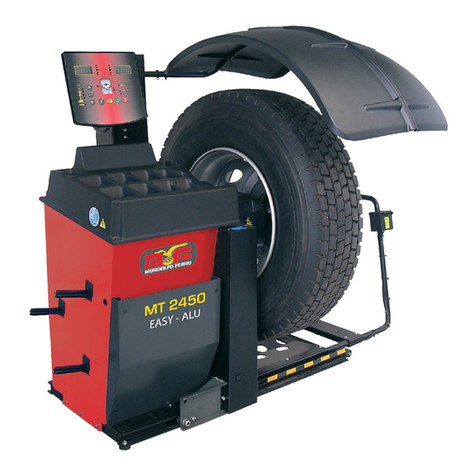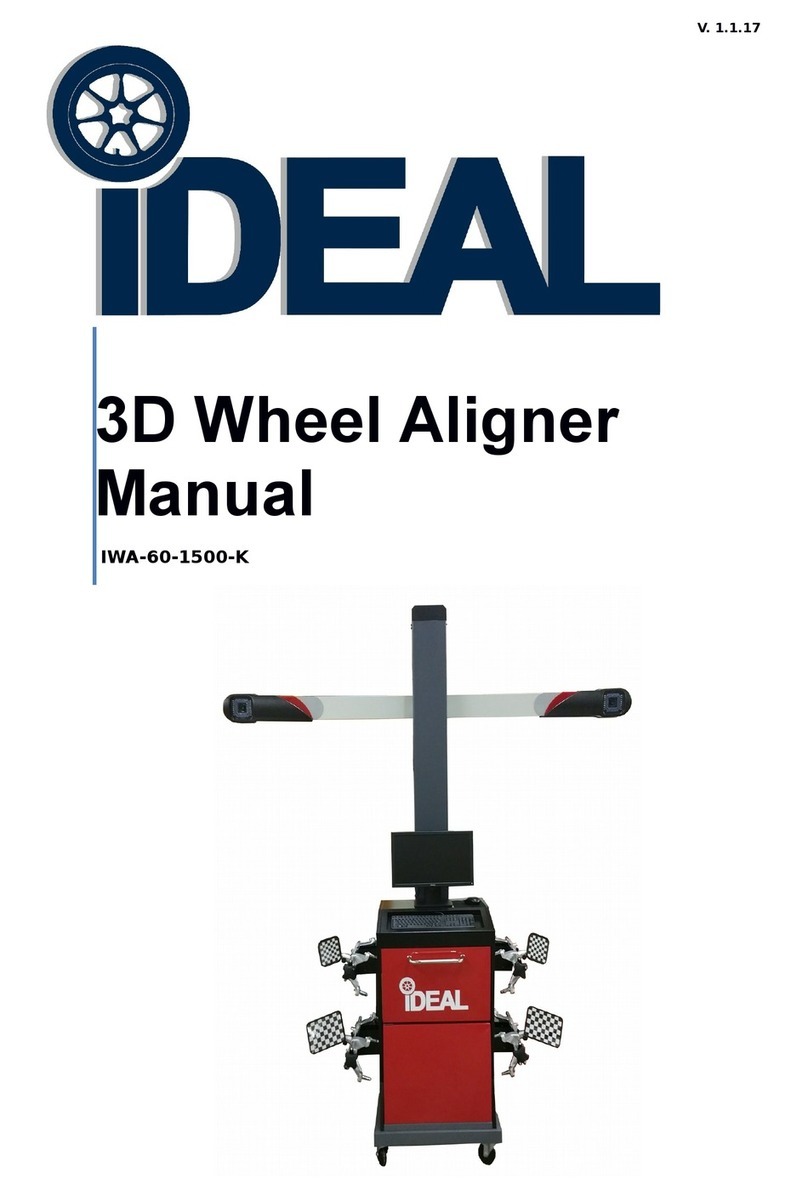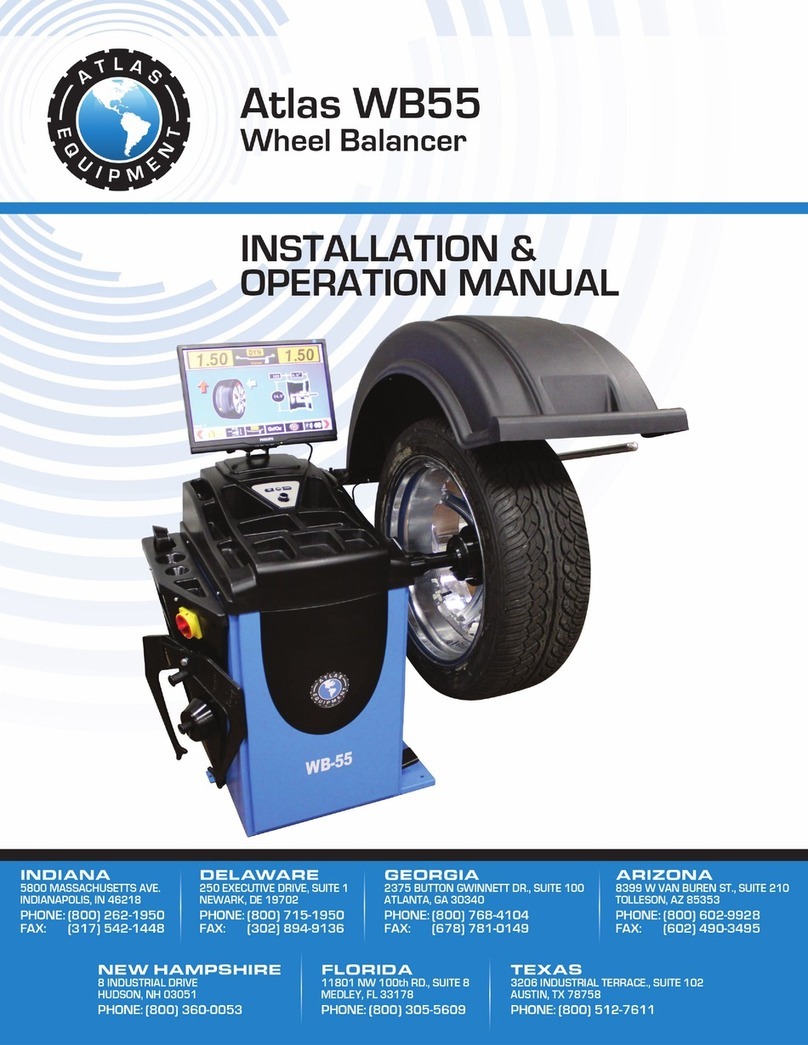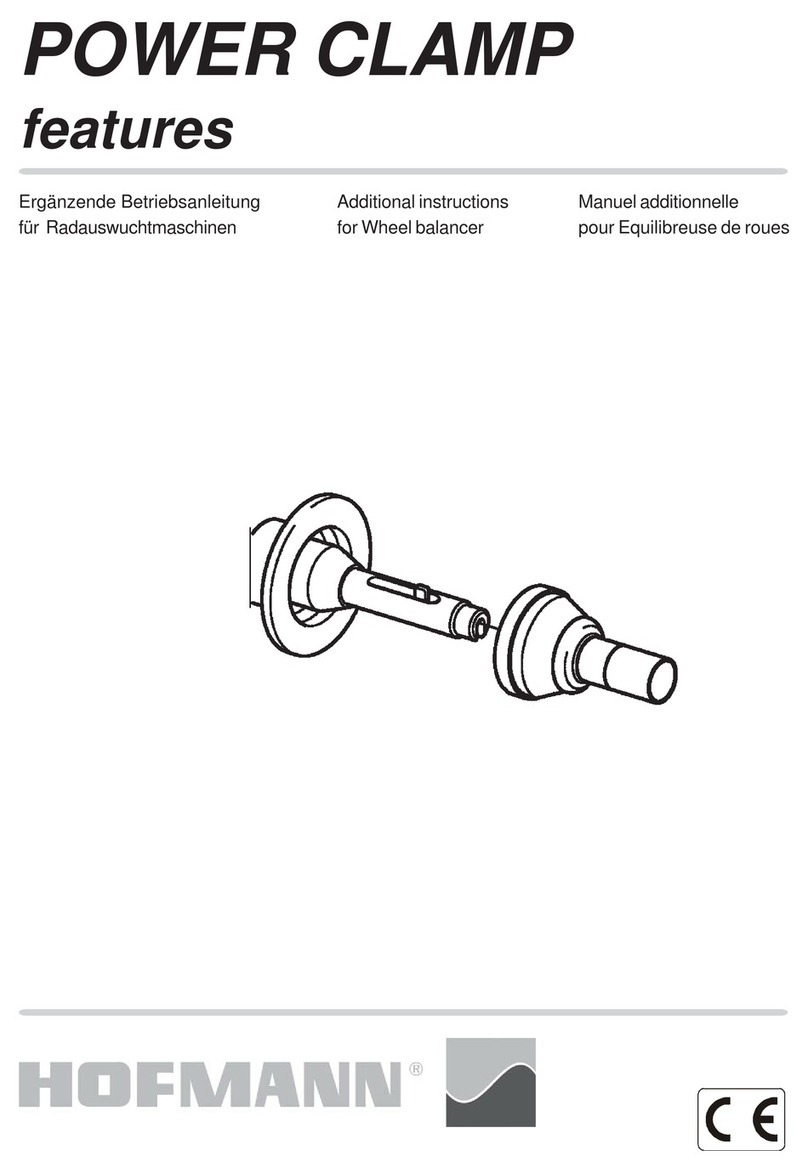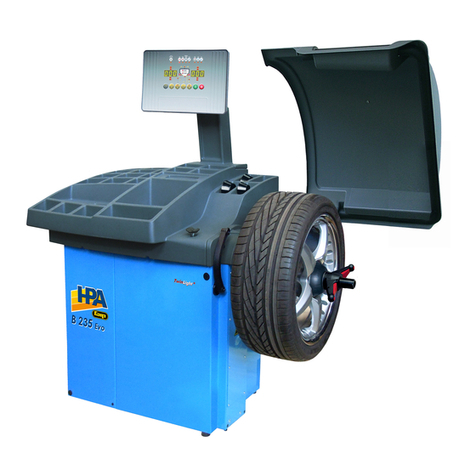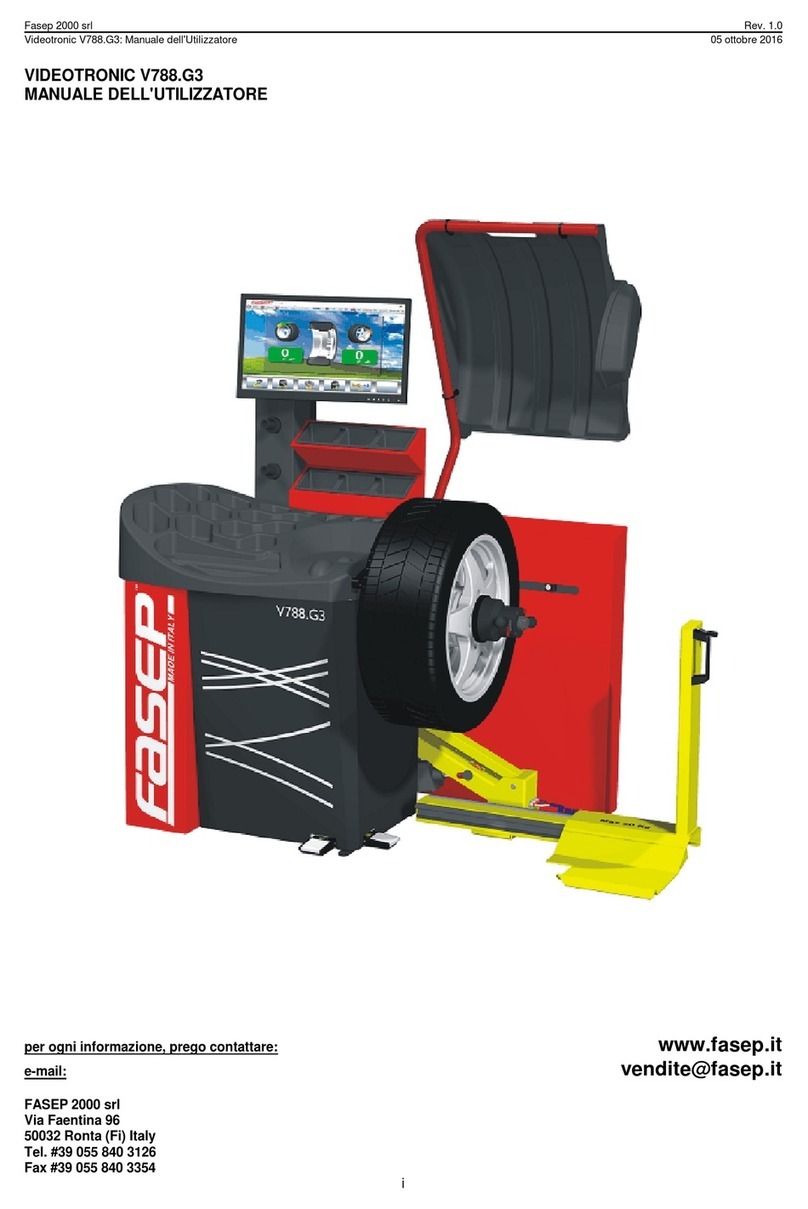
3
1. Description of the machine
1.1 General information
This microprocessor controlled machine is intended for the balancing of tyres with a
weight of up to 60 kg. The key-controlled system enables a balancing of all types of
tyres from standard tyres up to tyres for motorcycles and racing cars. Due to special
functions it is also a balancing of tyres with non-standard rims possible.
General safety information
Only skilled persons are allowed to operate the machine.
If the operator makes unauthorized reconstructions and/or changes on the machine
the CE verification will be overridden and a liability of ATH-Heinl for damages, which
are resulting from this reconstructions/changes, is also excluded.
Only use the machine according to its intended and specified use.
If there are errors during operation or during the working process then the machine
must be switched-off from the current.
All electrical connecting and reconnecting works are only to be done by skilled
personal under consideration of the regulations of VDE and/or the responsible power
company.
As there is always a residual risk which can not be foreseen while working with
technical work equipment, there are different self-explanatory warning symbols
(triangle yellow/black) on the balancing machine.
This warning symbols signalise the operator a possible residual risk and shall provoke
a special care to avoid accidents and/or damages of the product to be treated.
In general the operator shall eliminate possible residual risks before by a proper and
careful attitute.
Here it must be especially considered:
•Always use correct and proper working materials.
•Wearing suitable protective clothing respectively protective agents (e.g.
protective glasses, ear protection, safety shoes and so on).
•Considering given informations, instructions and technical datas of the
machine producer respectively of the producer to be treated.
